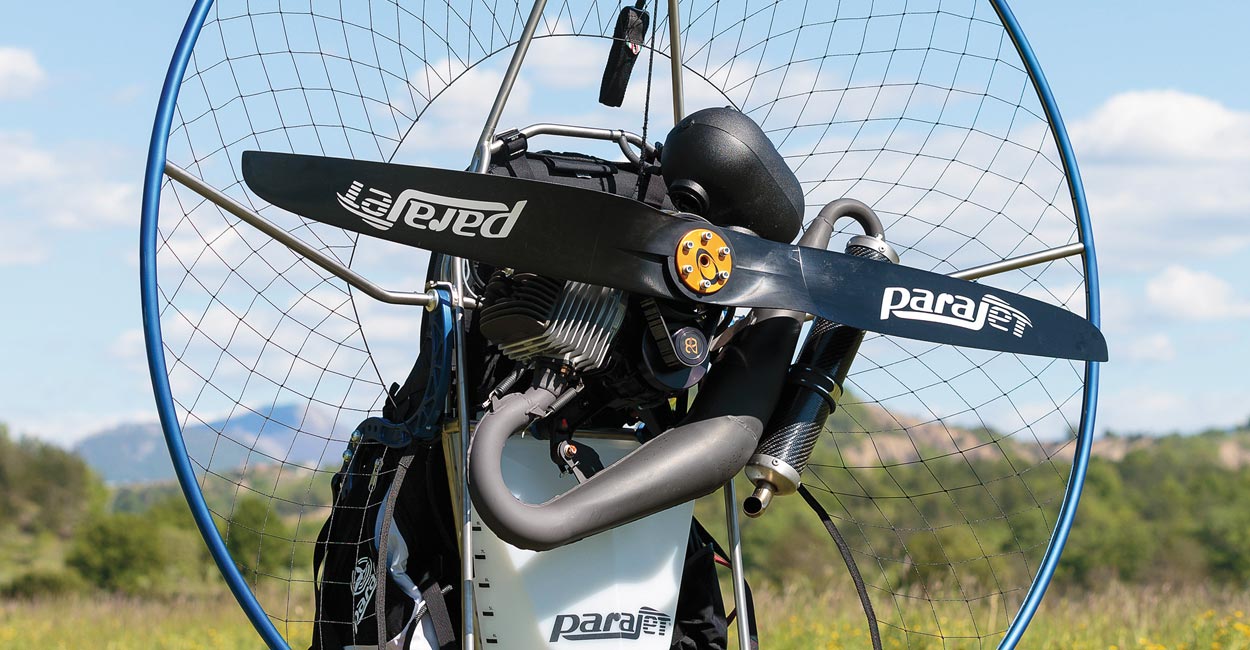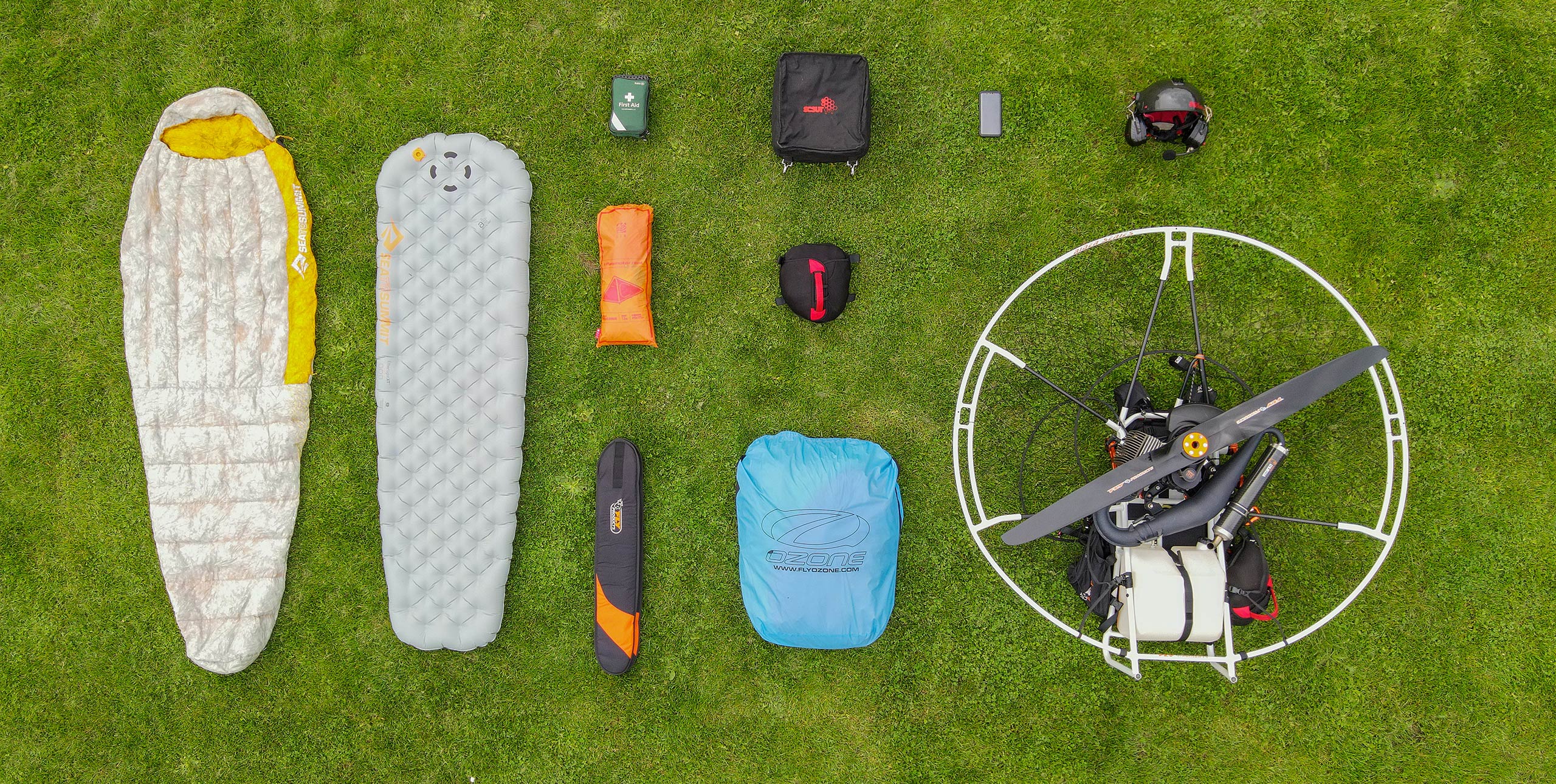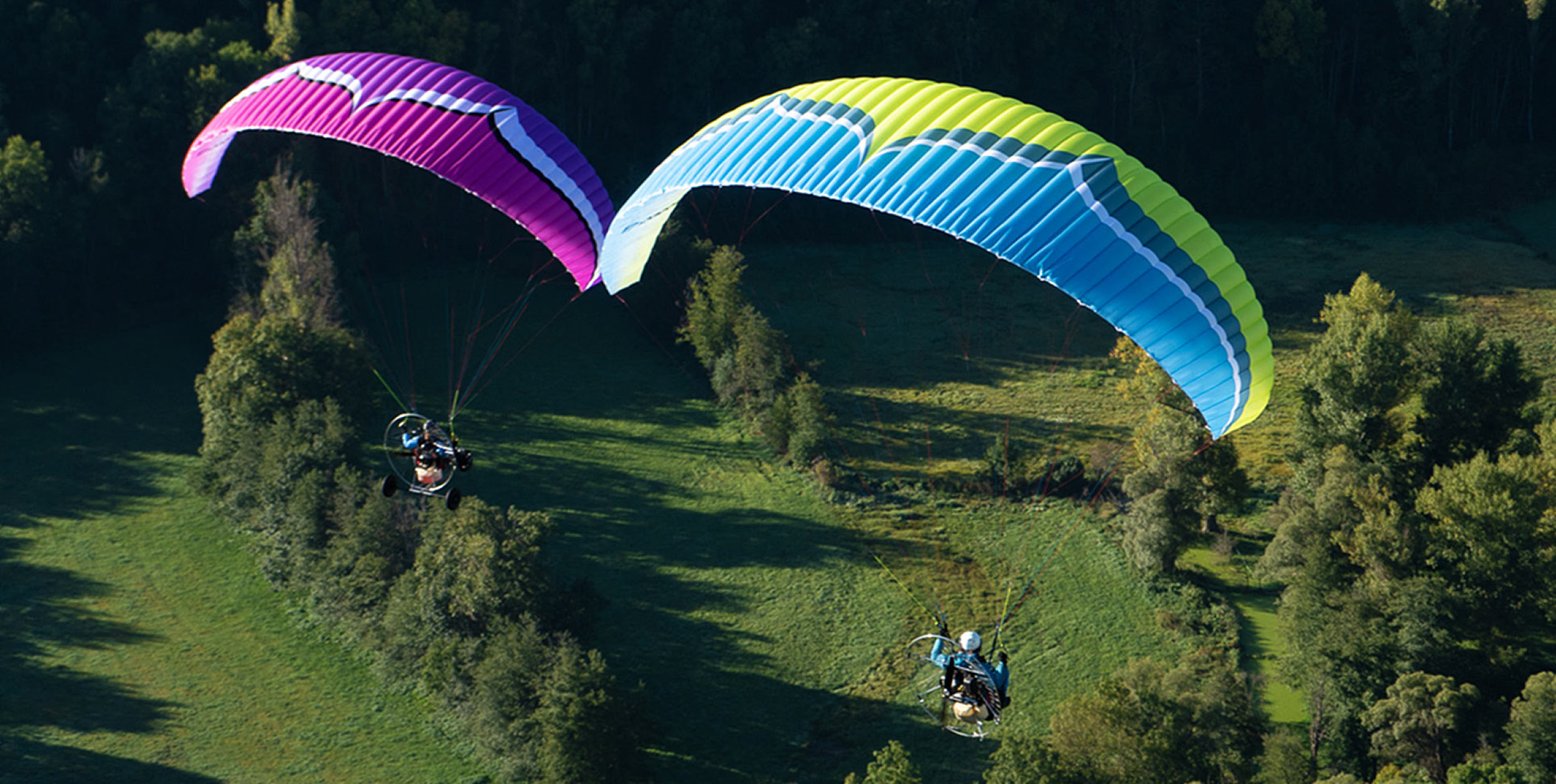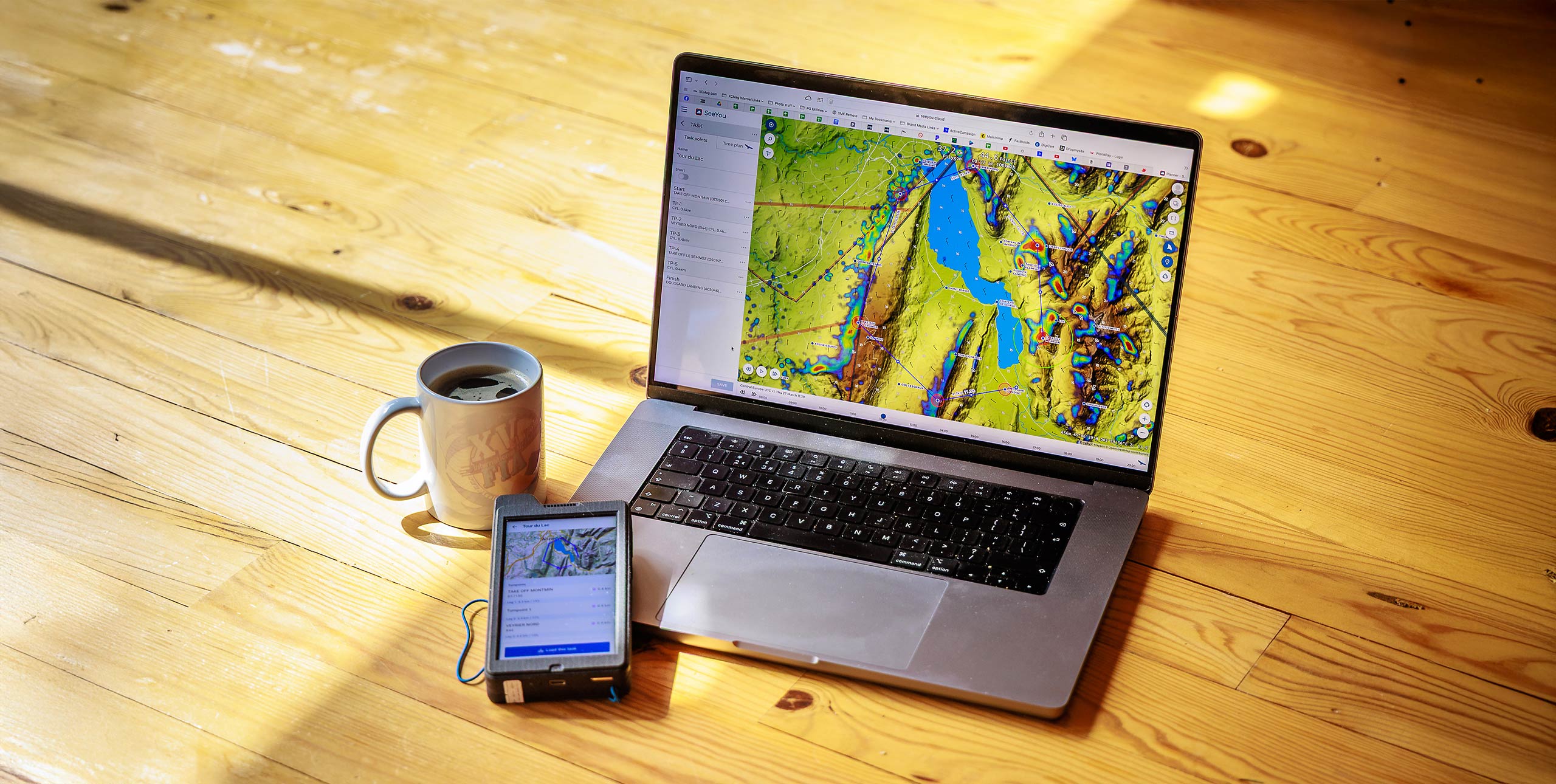
PARAJET MACHINES are positioned at the top end of the market, which is a reflection of the fact they design and produce their machines in-house at their production facility in England, guaranteeing a perfect path from conception to finished product. No one else is involved, and they can concentrate on quality control and delivering a finished final product.
Parajet are one of the few manufacturers to offer three very different frames in their range. The aluminium Volution is the strongest; the Zenith was the first chassis built with aluminium parts made by computer-controlled tooling (CNC); and the Maverick is Parajet’s lightweight machine.

The shallow depth of the unit means the propeller sticks out beyond the cage. There are more and more designs like this as manufacturers strive to reduce weight. The tapered fuel tank makes it easy to see the remaining fuel
Photos: Franck Simonnet
Construction
The chassis and cage are made of titanium, chosen for its combination of lightness and strength. The cage consists of four struts and four curved sections that interlock. The net is really unique, of which more later.
The slimline titanium tubing immediately gives it the appearance of being light. This stands up on closer inspection too, as the structure has been optimised for weight.
The upper part is thin with the engine close to the body. The base of the chassis is more robust. The tubes are arranged like tripod legs creating a good base: this is stable despite its reduced depth. The reduced depth means the propeller sticks out behind the unit.
Parajet usually offer a wide choice of motors installed in their units. With the Maverick they are pushing the Vittorazi Moster, although the smaller Top 80 and EOS 100 engines are also available. The company specify a weight of 24kg for the Maverick with the Moster Plus, and our scales confirmed that.
Different versions are available: The standard Maverick with the Moster Plus; Maverick Sport with a lighter e-prop and transport bag; and the Maverick Pro with the Moster Factory including a titanium exhaust and the Apco split-leg harness rather than the standard harness.

Mounting
There are not a lot of parts, so assembly is simple. One point is that the four cage struts are not interchangeable, which is a shame. It looks like it would have been straightforward enough to drill an extra hole so that they fit both left and right. However, that would have detracted from the aesthetics. The cage struts are mounted directly on the engine frame. If you bash the frame you should inspect the engine frame carefully.
The cage net is stored independently of the cage. It is wrapped in a circular case, and is deployed, successfully in our experience, like a pop-up tent! The attachment method is unique: the net is fixed on a rubber tube with a split in it. Opening the split allows you to slide the tube onto the cage. (There is a definite knack to it and it will be interesting to see if it is still so easy in cold weather, when the plastic will be less flexible.)
Finally, two small ratchets are used to tension the net. The huge advantage is that the hoop is perfectly smooth and nothing will cling to it, especially the lines.
The starter handle is kept in place using a pushpin. Its position is high, and it is easy to find it over the shoulder. Watch that the starter-cord doesn’t rub on the net; there is a definite right way to have it.
A transport bag is available as an option. It’s pretty bulky, but I’ve never seen any that offered such good protection. The walls are padded with high-density foam and there are sleeves to accommodate both parts of the propeller. Side pockets allow storage of the cage and small accessories and straps hold the chassis securely in place. The exterior is strong vinyl with wide rubberised handles making it easy to grab the bag. Everything has been well thought out.

Details
The tank is specific to Maverick. Its tapered shape makes reading the remaining amount of fuel particularly accurate and easy.
The mid-to-low level swing arms are the same as used on the other Parajet frames. They are made of anodised aluminium, with multiple positions to balance the machine according to the weight of the pilot. Connection points offset to the side compensate for the engine torque.
Dudek produce the standard harness. It is equipped with a rescue container and the back and the shoulder straps have thick foam padding, making it comfortable to carry. The upper bar of the frame digs into your upper shoulders, but only on the ground and once in the air you can’t feel it at all. The swing arms do not disassemble, but fold up along the chassis. The seatplate can be folded against the backrest for minimal space when storing or transporting.

In flight
It’s just as comfortable in flight. For starters, it is easy to slip into the harness simply by lifting up your knees. The back foam is sufficiently thick so that the frame isn’t felt. The overall balance of the machine is very good. The harness and swing arms are the same throughout the Parajet range, and these are qualities that you will find regardless of the model chosen.
If the correct adjustments of the straps have been made, the flight position is upright. The harness with its sliding straps at the front of the board promotes support.
At full speed, a little weightshift is enough to offset the engine torque. While in level flight, the offset of the attachment points does its job. The relatively vertical position of the harness makes getting out easy when landing.

Conclusion
The finish is without flaw. Parajet fans will undoubtedly appreciate this unit. For others, even if it is not the lightest machine on the market, the level of comfort cannot be dismissed. With its innovative cage and net mounting system the creativity of the Parajet team truly shines through.

****
Manufacturer’s Spec
What Parajet say: “Lightweight, but never too lightweight … a strong and functional structure that delivers a remarkable flying experience.”
Use: Everyday use
Pilot level: Intermediate
Motor: Vittorazi Moster 185
Cage Diameter (m): 1.385
Fuel tank size (l): 10
Combined weight (kg): 24.5
Retail price: From £4,333 ex local sales taxes
Franck Simonnet has been flying paramotors for 15 years. A writer and photographer whose paramotor photography has been published around the world, he is also a paramotor instructor. He lives near Paris, France
To stay up to date and read our reviews first, subscribe to Cross Country











